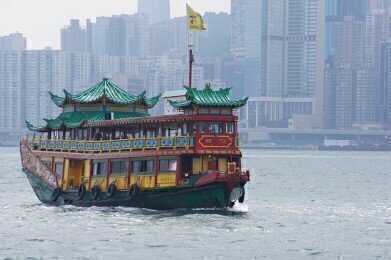Water/Wastewater
What Caused the Huge East China Oil Spill?
Jan 22 2018
A huge oil spill occurred on the East China sea, covering a massive 120-square-kilometres. Green Peace and other environmental charities are now worried as to what effect this is going to have on the surrounding marine life. So, what exactly happened and how will the spill be dealt with?
Two tankers collide
On January 6th, 2017, two tankers collided in the East China sea. The two tankers, one carrying natural gas condensate and the other carrying grain, came into contact causing a huge oil spill. The Iranian tanker, Sanchi, was transporting 1 million barrels of natural gas condensate to South Korea. 32 crew members onboard when it hit the Honk Kong registered tanker. Sadly, due to the toxic explosion and gases emitted it is presumed that all 32 crew members died, with only three of the bodies being recovered.
Can the natural gas condensate be cleaned up easily?
The collision caused a huge fire lasting just over a week, meaning that most of the oil on the waters surface was able to be burnt off. Fortunately, the condensate burns and evaporates easily, meaning that the chances of a thick black oil slick is slim due to there being little surface oil left.
However, Greenpeace have argued that it is impossible to gage how much of the oil has burnt off, meaning there could be thousands of gallons worth of oil remaining below the surface. The issue with the natural gas condensate is that it is partially soluble, so the clear, odourless liquid will prove difficult to remove from the water.
After the blaze was put out on Monday, recent observations have seen that two oil slicks from the collision have spread dramatically. They are now covering 52 square miles and are less than 200 miles from the Naha coast.
What does this mean moving forward?
The main concern now is the threat to the marine life. The fuel that was powering the tanker has now raised concerns. It is much dirtier than the consulate, presenting an extremely toxic cocktail for the marine life. According to Green Peace, many edible species use this area in the winter such as crabs and mackerel. The Chinese Foreign Ministry issued a statement saying "[the clean-up] is also a priority area of our efforts. No one wants to see a large-scale secondary disaster."
Another factor which can affect marine life is the temperature of water, which is even more prominent with the risk of impact from climate change. The article ‘AQA 7/17-2 - 4 Industries Which Require Water Temperature Monitoring’ explores the importance of water temperature monitoring in a range of industries.
Digital Edition
IET 34.2 March 2024
April 2024
Gas Detection - Biogas batch fermentation system for laboratory use with automatic gas analysis in real time Water/Wastewater - Upcycling sensors for sustainable nature management - Prist...
View all digital editions
Events
Apr 22 2024 Hannover, Germany
Apr 22 2024 Marrakech, Morroco
Apr 23 2024 Kuala Lumpur, Malaysia
Apr 23 2024 Kintex, South Korea
Apr 23 2024 Edmonton, AB, Canada


















